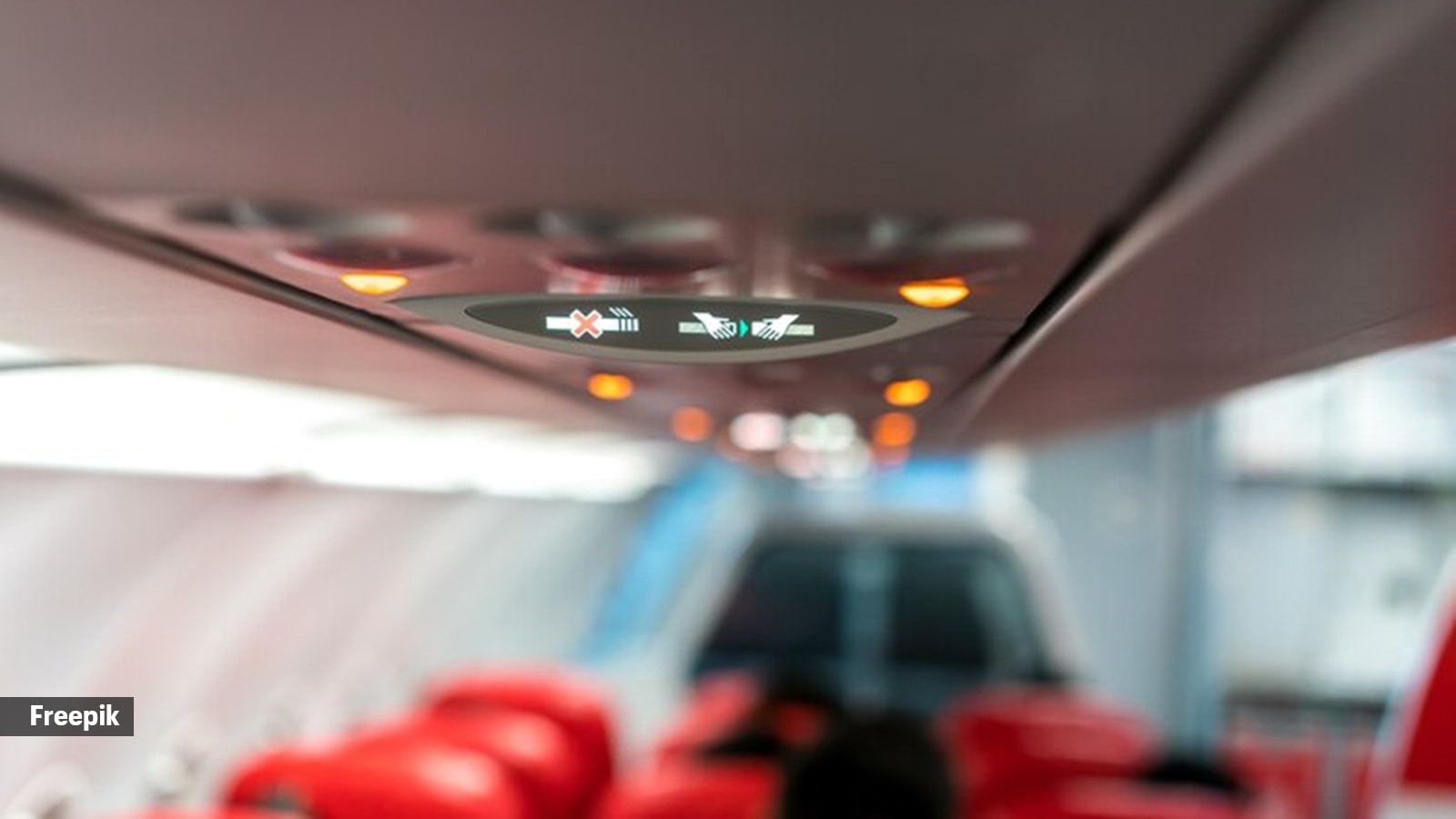But how exactly does this work, and why is it such an integral part of aviation procedures?
Dr Vandana Singh, director of Global Corporate Key Account Management at Saudia Cargo, tells indianexpress.com, “The primary reason for dimming cabin lights during takeoff and landing is to help passengers’ eyes adjust to lower light conditions.”
Eye adaptation to darkness improves reaction times by allowing passengers’ eyes to become more sensitive to low light levels, explains Dr Singh. When the cabin lights are dimmed, passengers can gradually acclimate to the darker environment, making it easier for them to see emergency exit signs and other critical visual cues in low-light conditions.
By reducing the contrast between the cabin and outside light, dimmed lights enhance visibility, thereby facilitating a quicker and safer evacuation if necessary.
Are there any specific international aviation regulations or standards that mandate dimming cabin lights?
There are no specific international aviation regulations that mandate the dimming of cabin lights; rather, it is a widely accepted safety practice among airlines. “While guidelines from national aviation authorities like the FAA (Federal Aviation Administration) or EASA (European Union Aviation Safety Agency) inform these practices, airlines typically adopt them based on safety recommendations rather than strict regulatory requirements. Thus, while dimming cabin lights may not be universally mandated, it aligns with best practices for enhancing passenger safety,” notes Dr Singh.
 The primary reason for dimming cabin lights during takeoff and landing is to help passengers’ eyes adjust to lower light conditions. (Source: Freepik)
The primary reason for dimming cabin lights during takeoff and landing is to help passengers’ eyes adjust to lower light conditions. (Source: Freepik)
Other safety measures typically employed during takeoff and landing that passengers might not be aware of
Dr Singh states, “During takeoff and landing, several safety measures are implemented that passengers might not be aware of, all aimed at ensuring their safety and preparedness. One key measure is the requirement for passengers to raise their window shades. This practice allows both passengers and crew members to assess external conditions and identify any potential hazards outside the aircraft. Additionally, securing personal items is crucial; loose items must be stowed properly to prevent them from becoming dangerous projectiles during turbulence or sudden stops.”
Story continues below this ad
Another important safety measure is ensuring that seatbacks are in an upright position, she adds. “This not only provides optimal brace positions for passengers but also reduces the risk of injury during unexpected events. Flight attendants play a vital role in passenger safety by conducting pre-flight safety briefings. These briefings inform passengers about emergency exits, proper seatbelt usage, and how to operate oxygen masks and life vests if necessary.”
Moreover, emergency lighting systems are strategically installed throughout the cabin. These systems illuminate exit paths during low visibility situations, Dr Singh remarks, guiding passengers safely out of the aircraft in case of an emergency. “Collectively, these measures enhance overall safety during critical phases of flight, ensuring that passengers are well-prepared for any potential emergencies they may face.”
These measures collectively enhance safety during critical phases of flight, ensuring that passengers are well-prepared for any potential emergencies.


